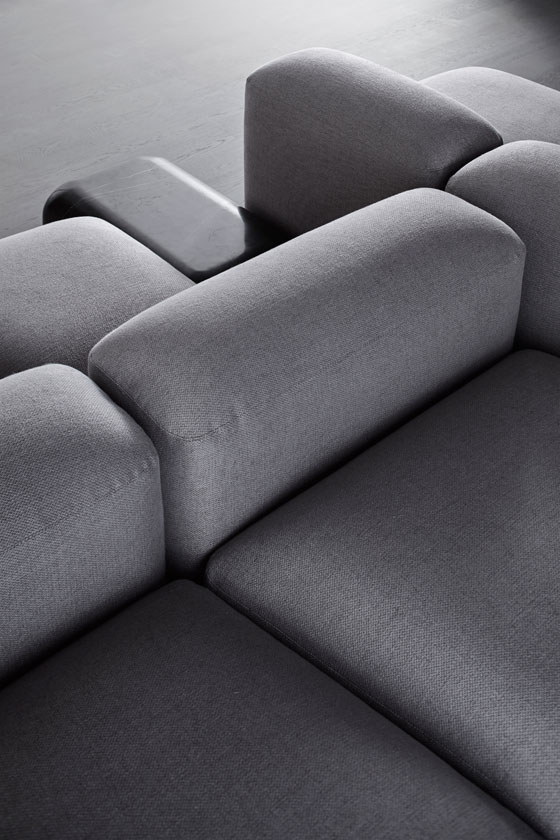Welcome to the design lab
Brand story by Giovanna Dunmall
Grumo Appula (BA), Italy
15.01.16
As much a long-term research project and lifestyle philosophy as it is a brand, AMURA, launched in 2015, is committed to marrying affordability with Italian quality, underpinned by second-to-none upholstery craftsmanship.
Lapis is the signature launch by new furniture brand Amura. Designed by art director Emanuel Gargano, the modular system can be put together to create seats and sofas of different sizes and styles
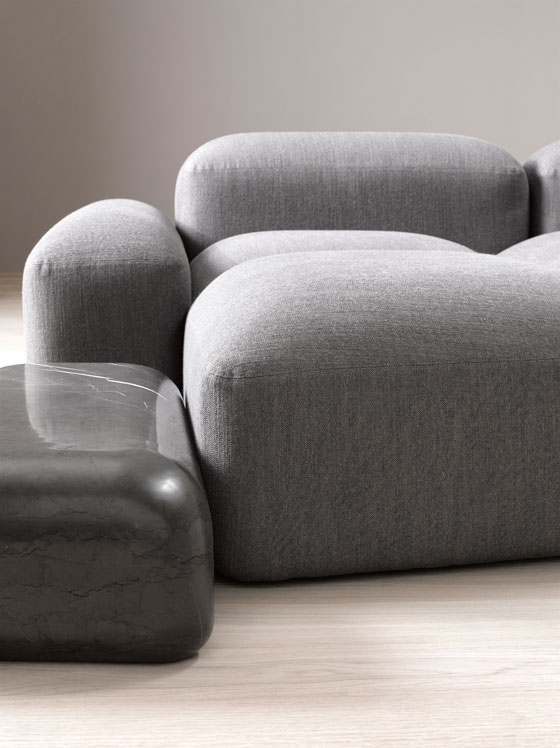
Lapis is the signature launch by new furniture brand Amura. Designed by art director Emanuel Gargano, the modular system can be put together to create seats and sofas of different sizes and styles
×If you haven’t heard of AMURA yet, 2016 is set to be the year this changes. Launched in 2015 by a leading sofa manufacturer in southern Italy, AMURA is not so much a brand as a long-term research project and a lifestyle philosophy, says its art director, London-based Italian designer Emanuel Gargano. “Our concept is to make very high-quality yet comparatively affordable furniture pieces that pay tribute to the manufacturer’s vast experience, craftsmanship and know-how in the field of upholstered furniture.” The production facility behind the AMURA brand has in fact been developing and manufacturing furniture for some of the most renowned brands in Italy and Europe for two decades. “After making furniture for everyone else, they decided to branch out and create their own line,” explains Gargano.
Amura is located not far from Altamura, a pretty medieval town set on a hill in Puglia in southern Italy close to the border with Basilicata. The spire of its 13th century Romanesque cathedral is visible from afar
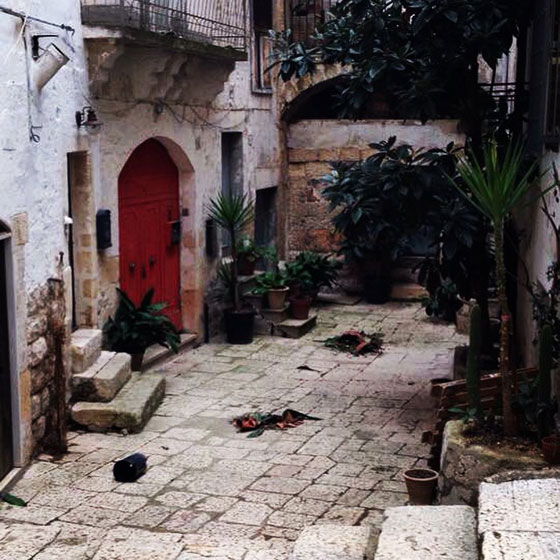
Amura is located not far from Altamura, a pretty medieval town set on a hill in Puglia in southern Italy close to the border with Basilicata. The spire of its 13th century Romanesque cathedral is visible from afar
×The name Amura comes from the word amore and references Altamura, the pretty historic town in Puglia (in Italy’s heel) where the world-famous Altamura bread originates and where AMURA’s HQ is located. The latter is an impressive state-of-the-art 35,000 square-metre factory that includes a 2,000 square-metre prototyping department; it offers Amura the sort of expertise and support that a new brand can usually only dream of. It also offers inspiration, says Gargano. “Designers get inspiration from the process of making and close contact with the materials and technologies,” he says. “At AMURA, I will spend days getting to know the materials and processes, and working with the craftsmen on details such as the stitching and the finishes.”
Gargano has enlisted the expertise and talents of other designers too, such as the Rome-based interior designer Anton Cristell, with whom he has co-designed several of the pieces Amura is launching at imm cologne this January. These include a modular, lacquered metal bookshelf called ‘Eresia’ (heresy) that looks intentionally and appealingly slightly off-kilter and a low multi-level and geometric coffee table called ‘Millefoglie’. Also on show for the first time will be a new streamlined armchair with solid wood legs called ‘Leonard’.
The metallic Millefoglie coffee table was designed by Emanuel Gargano and Anton Cristell and is being presented for the first time at IMM in Cologne this January. Its geometric multi-level suspended appearance was inspired by a millefeuille layered cake
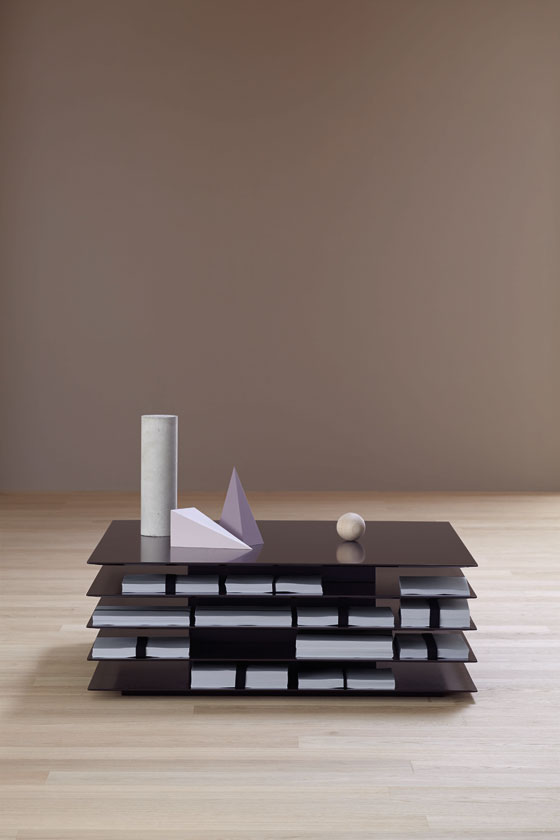
The metallic Millefoglie coffee table was designed by Emanuel Gargano and Anton Cristell and is being presented for the first time at IMM in Cologne this January. Its geometric multi-level suspended appearance was inspired by a millefeuille layered cake
×Leonard, designed by Emanuel Gargano, is a new sofa with solid wooden legs and will also be shown at IMM in Cologne (Hall 11.1 / Stand B024)
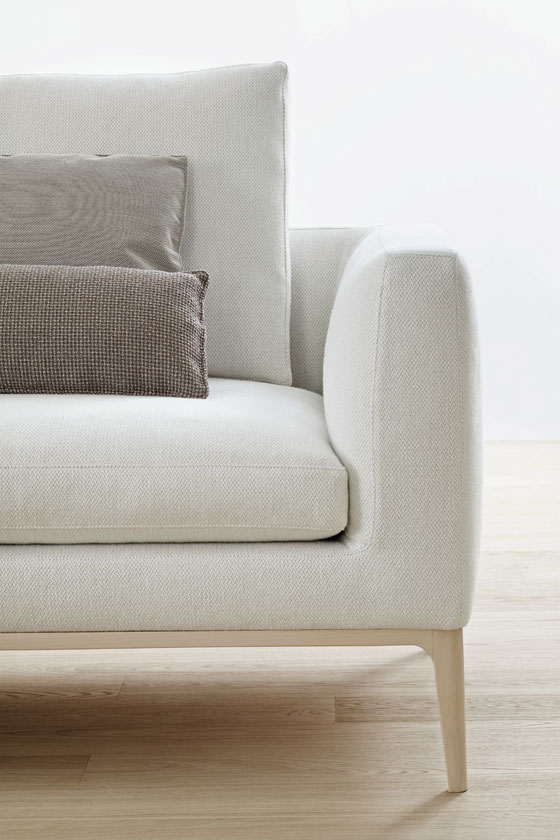
Leonard, designed by Emanuel Gargano, is a new sofa with solid wooden legs and will also be shown at IMM in Cologne (Hall 11.1 / Stand B024)
×Amura’s new modular lacquered metal bookshelf Eresia (Heresy in English) is intentionally slightly asymmetrical

Amura’s new modular lacquered metal bookshelf Eresia (Heresy in English) is intentionally slightly asymmetrical
×AMURA’s star product is undoubtedly ‘Lapis’ however. Launched only a few months ago, it’s a unique modular armchair system made up of elements resembling large rounded stones or rocks of different sizes and heights that are combined to create seats, armrests and backrests. It was inspired by the surrounding region and the unique and photogenic city of Matera in neighbouring Basilicata, just a few kilometres from the factory, explains Gargano. “Lapis was born out of my walks around Matera’s cobbled streets and cave dwellings,” he says. “That whole area is beautiful and underrated.”
The beauty of Lapis lies also in its flexibility. It can be used to create a 50-square-metre island or furnish an entire hotel says Gargano; one pouf can be placed at the end of the bed or several pieces used to create a simple armchair for the home. It comes in over 80 leather and 200 fabric finishes, and can be bought with a lush silk carpet (sold by the metre and made-to-measure) that continues and deepens the Matera stone motif and complements the sofa system’s almost primordial appearance. Fittingly, the range’s coffee tables are made out of veined stone and appear to have been weathered and smoothed down by centuries of wind and rain.
Lapis was inspired by the rocky cave dwellings of Matera in Basilicata, a town located just a few km from Amura’s factory and HQ. Its rounded edges give it a weathered and archaic appearance that is contrasted by its comfortable memory foam filling
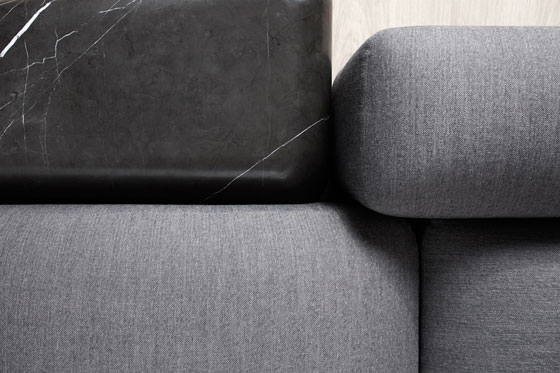
Lapis was inspired by the rocky cave dwellings of Matera in Basilicata, a town located just a few km from Amura’s factory and HQ. Its rounded edges give it a weathered and archaic appearance that is contrasted by its comfortable memory foam filling
×The most striking thing about Lapis is its timeless stone-like aspect, as if it were organic and had been there for millennia. Once you are seated, however, it is soft and comfortable. Memory foam has been used inside the upholstery to return the sofa to its original shape once people get up. “We liked the idea of the contrast between its rock-like appearance and the way it is so accommodating, the way it envelops you as you sit down,” agrees Gargano.
The AMURA website and accompanying marketing photography shows Lapis laid out in different formations on a beach and in fields almost as if it had grown out of the landscape. “From a communications and graphics point of view, we wanted to do things differently, present the brand in a fresher and more direct way,” explains Gargano, who as a designer is more used to creating lights and kitchens than sofas and therefore brings a completely un-jaded eye and energy to the sector.
Lapis was launched with a captivating photo campaign featuring the sofa system arranged informally in different landscapes, such as beaches and fields
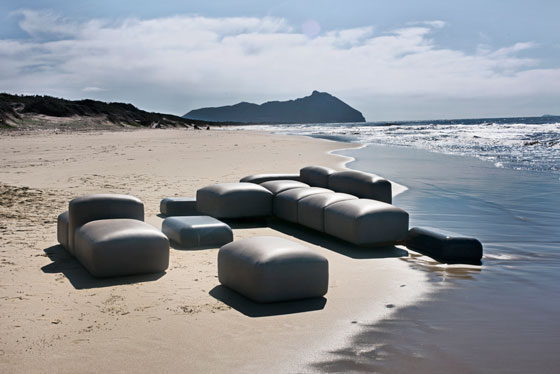
Lapis was launched with a captivating photo campaign featuring the sofa system arranged informally in different landscapes, such as beaches and fields
×The campaigns by the big Milanese furniture brands are beautifully elegant and restrained he continues, but their marketing and image can be so fashionable and tasteful that it becomes forbidding; ordinary people feel scared to walk into one of their showrooms. Amura is of the same quality as these leading brands he says but more accessible, both in terms of its more informal approach and design language but also in terms of price point.
In February AMURA will open a 400-square-metre two-storey flagship store in Milan’s design quarter, Brera. It plans to follow up by opening several more showroom/stores in the coming years, with the first planned for New York. The idea is to showcase and give visibility to the different products in residential and hospitality settings. And, of course, to show design aficionados and others consumers what decades of experience and craftsmanship can create when combined with a fresh and unfettered approach.










